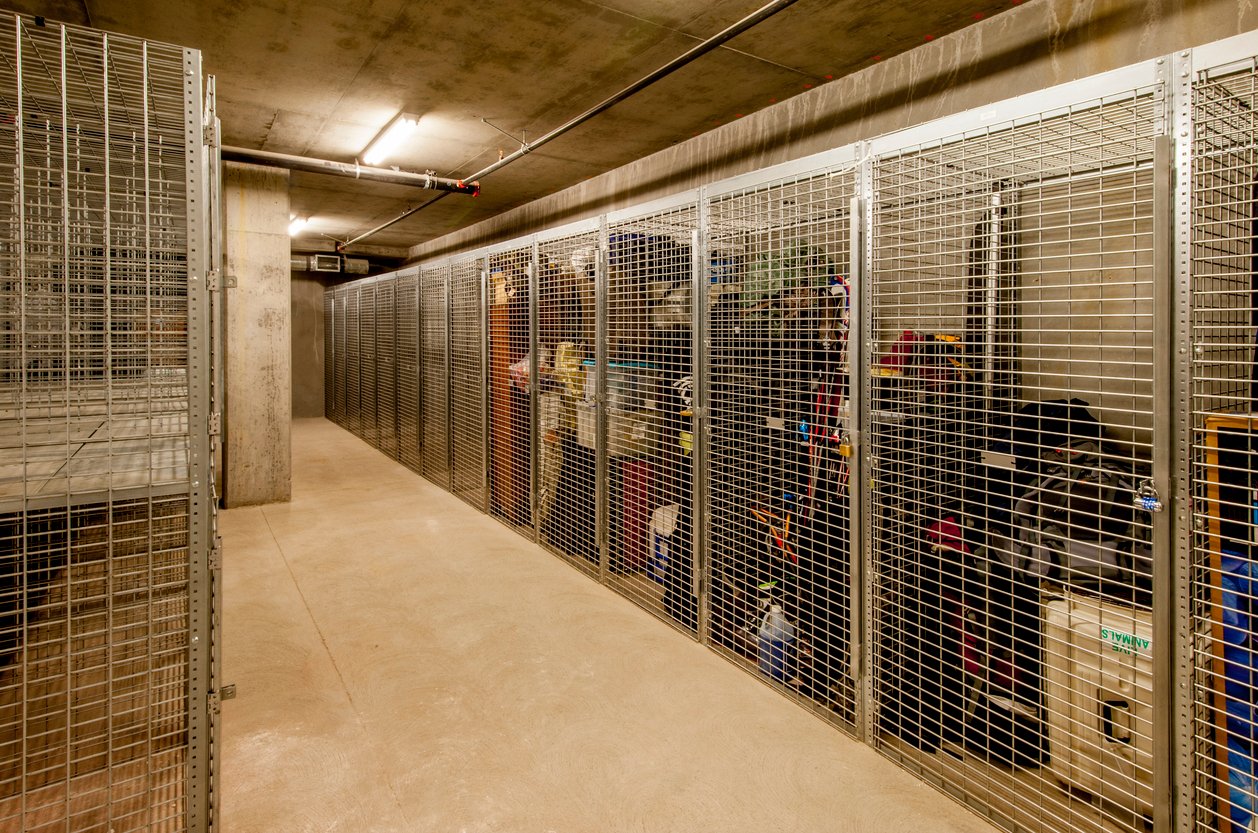Money makes the world go round, whether you like it or not. If you’re operating a multi-family property, that means that you’ll need to make sure that you’re profitable. It doesn’t matter if you’re a mom-and-pop operation or running the property on behalf of an investment firm, you need to make sure that you can cover the costs of running the property.
Trying to find ways to increase profits can be difficult, but one way that you can do it ischarging tenants for extra services and amenities. These extra fees can provide you with a steady stream of income that can help you to make sure that your property remains profitable.
One of these fees that many property managers are looking into is charging tenants for tenant lockers.
Tenant lockers can be a great way to provide tenants with extra storage space and convenience. Tenant lockers are typically located in the common areas and can be used to store items such as bicycles, sports equipment, and extra clothing and bedding.
But do tenants typically pay to rent these out? Let’s take a look at how these things work and whether or not tenants should have to pay for them.
What Is a Tenant Locker?
We briefly touched on what tenant lockers are, but let’s go into a bit more detail. A tenant locker is a storage unit that is typically located in the common area of a multi-family property. Tenant lockers can be used to store items that the tenant may not have room for in their unit.
Tenant lockers are typically made of metal or plastic, and are usually quite secure. The most common features of tenant lockers are:
- Key operated locks:
- Ensuring that your tenants are the only ones who have access to their lockers.
- Ventilation:
- To ensure that the items stored in the locker do not become damp and moldy.
- Shelving units:
- To provide extra space for tenants to store their belongings.
- A built-in mirror:
- This can be useful for tenants when getting ready before going out, or when changing clothes. This is pretty uncommon, but it really depends on the property.
- Number lockers:
- To ensure that tenants can easily identify their lockers.
- Solid construction:
- To ensure that the locker is secure and sturdy.
Tenant lockers can provide tenants with a great way to store their belongings, and can also provide them with extra convenience. Tenants do not have to worry about lugging their items back and forth every time they move, or having to find storage units off-site.
These lockers can also help property managers make sure that the common areas are kept neat and tidy. It’s much easier for property staff to clean around tenant lockers than it is if tenants were just using the common area to store their items.
The lockers can also provide tenants with a sense of security, knowing that their belongings are safe and secure in a locker. This can be especially important for tenants who may not have much storage space in their unit, or who need an extra bit of security for items like bicycles or electronics.
Tenant lockers can be a great amenity for multi-family properties, and can provide tenants with extra convenience and security. But do tenants typically have to pay for these lockers? Let’s take a look at how the process works.
Do Tenants Typically Pay for Lockers?
Now, let’s look at the most important part of this entire article: whether or not tenants have to pay for tenant lockers. The answer, in short, is yes; tenants typically do have to pay extra for these lockers.
The exact fee that a tenant has to pay will vary depending on the property and how many units are available at the property. Typically, however, there are several different options when it comes to charging fees:
- One-time upfront fee:
- This is usually a nonrefundable one-time payment that the tenant pays when they move into their unit. It covers all of their locker usage throughout the duration of their lease agreement with you as a landlord or property manager.
- Monthly rental fee:
- Instead of having an upfront charge like above, some landlords may choose to charge tenants on a monthly basis if they plan on using more than one locker during their stay at your multi-family residence.
- Per item storage rate (e .g., per bicycle):
- If you only want certain items stored in specific types of lockers (such as bicycles), you can also set up individual rates for those items instead of just lumping everything together into one fee.
- Annual fees:
- If you know that a tenant will be staying at your property for an extended period of time, then it may make sense to charge them an annual fee instead of charging them on a monthly basis.
It’s important to note that the fees charged should reflect the value of the unit. Do keep in mind that your competition for this is usually off-site storage facilities, so you may need to be competitive when it comes to setting your fees.
It’s also important that the fee structure is clearly outlined in the lease agreement between yourself and your tenants. This will ensure that both parties are aware of how much they’re expected to pay for tenant locker use, and will help avoid any misunderstandings or confusion down the line if a dispute arises.

When deciding on what fee structure works best for you as a property manager or landlord, it’s important to consider all of these options before settling on one option over another. You’ll want to make sure that whatever decision you make is in line with local laws relating to tenant lockers, as well as making sure that it makes sense financially for both yourself and your tenants.
The amount of money that comes in from tenant locker fees can vary greatly, depending on your property and how many tenants you have. But it is possible to make a good amount of money from these fees if you find the right balance between what’s fair for both parties involved.
Are Tenant Lockers a Worthy Investment?
If you’re concerned about your bottom line, and let’s face it, you are, then you may be wondering if tenant lockers are a worthy investment. After all, it’s easy to just assume that these fees are coming out of your pocket, but in reality, they can actually be quite profitable for property managers and landlords.
We mentioned the benefits, let’s look at some potential drawbacks:
- Maintenance:
-
- Tenant lockers will require maintenance, and you’ll need to account for this in your budget.
- Security:
- It’s important to make sure that the tenant lockers are secure, so it may be worth investing in additional security measures like cameras or locks.
- Size of units:
- If you’re charging a one-time fee for the use of a locker, then keep in mind that tenants may want larger units if they have more items that can fit into a standard locker size.
- Competition from offsite storage facilities:
- You’ll need to make sure that your fees are competitive with those offeredother storage facilities nearby.
Overall, tenant lockers can be quite profitable for property managers and landlords; however, it’s important to make sure that you take all of the potential drawbacks into consideration. Make sure that you’re charging a fair fee, taking into account local laws and storage facility competition.
In addition to this, it’s also important to make sure that your property is in good shape before investing in tenant lockers. If your common areas are not well-maintained or secure then tenants may be less likely to rent out these units if they feel like their belongings won’t be safe there.
You’ll also want to consider how much time and energy will be required on your part when it comes to maintaining and managing the tenant lockers. You’ll need to make sure that you have enough staff or maintenance personnel on hand in order to properly manage these units, as well as making sure that any issues are dealt with promptly.
In the end, tenant lockers can be a great way for property managers and landlords to generate additional income while providing tenants with extra convenience and security. However, it’s important to take all of these factors into consideration before investing in them.
Doing your research beforehand will ensure that you’re able to maximize your profits while providing excellent service for your tenants at the same time!
Adding to Your Property’s Cashflow
Adding money to your property’s income is always a good thing, and tenant lockers can be a great way to do just that. But it’s important to make sure that you’re charging fair fees, taking into account local laws, facility competition, and the amount of time and energy required for the maintenance and management of these units.
Tenant lockers can be a great amenity for multi-family properties; they provide tenants with extra convenience as well as security. As long as you take all of the potential drawbacks into consideration when setting your fees then tenant locker rentals can provide an excellent opportunity for property managers or landlords looking to increase their profits!
